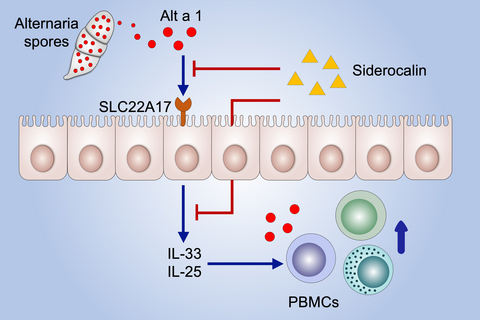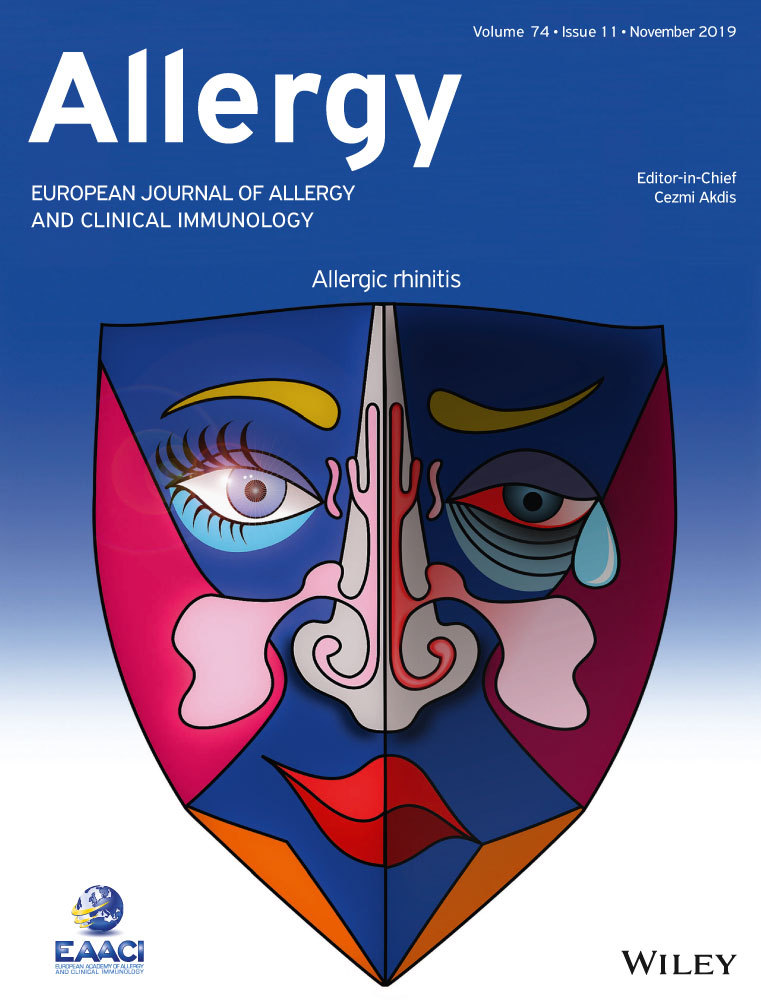Interaction of Alt a 1 with SLC22A17 in the airway mucosa
Abstract
Background
Despite all the efforts made up to now, the reasons that facilitate a protein becoming an allergen have not been elucidated yet. Alt a 1 protein is the major fungal allergen responsible for chronic asthma, but little is known about its immunological activity. Our main purpose was to investigate the ligand-dependent interactions of Alt a 1 in the human airway epithelium.
Methods
Alt a 1 with and without its ligand (holo- and apo- forms) was incubated with the pulmonary epithelial monolayer model, Calu-3 cells. Allergen transport and cytokine production were measured. Pull-down and immunofluorescence assays were employed to identify the receptor of Alt a 1 using the epithelial cell model and mouse tissues. Receptor-allergen-ligand interactions were analyzed by computational modeling.
Results
The holo-form could activate human monocytes, PBMCs, and polarized airway epithelial (Calu-3) cell lines. The allergen was also transported through the monolayer, without any alteration of the epithelial integrity (TEER). Alt a 1 also induced the production of proinflammatory IL8 and specific epithelial cytokines (IL33 and IL25) by Calu-3 cells. The interaction between epithelial cells and holo-Alt a 1 was found to be mediated by the SLC22A17 receptor, and its recognition of Alt a 1 was explained in structural terms.
Conclusions
Our findings identified the Alt a 1 ligand as a central player in the interaction of the allergen with airway mucosa, shedding light into its potential role in the immunological response, while unveiling its potential as a new target for therapy intervention.
Graphical Abstract
Alt a 1 is released from Alternaria alternata spores in complex with its native ligand, being recognized by the Solute carrier family 22 member 17 receptor. Production of cytokines IL25 and IL33 occurs only in the presence of the ligand, being abolished with specific antibodies against Solute carrier family 22 member 17. Alt a 1 shows structural relationship with human siderocalin mimicking its airway entry route.
CONFLICT OF INTERESTS
The authors declare that they have no conflicts of interest.





